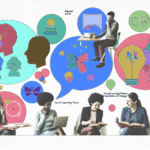
Introduction
In every neighborhood, there exists a web of individuals and organizations quietly working behind the scenes to uplift their communities. These unsung champions are the local heroes. By harnessing community resources, they’re not just making a difference; they’re changing lives and shaping the future of their neighborhoods. In this in-depth exploration of Local Heroes: How Community Resources Are Making a Difference in Our Neighborhoods, we’ll delve into the transformative power of local initiatives, spotlight remarkable case studies, and illuminate how collective action fosters resilience and growth.
Understanding Local Heroes
What Defines a Local Hero?
Local heroes are ordinary people who, through extraordinary efforts, contribute to the fabric of their communities. They can be teachers, volunteers, activists, or leaders of grassroots organizations. Their impact extends far beyond individual actions, creating ripple effects that empower others. They often leverage community resources—like local schools, nonprofits, and public spaces—to create significant change.
The Role of Community Resources
Community resources encompass a wide range of assets that neighborhoods can draw from. This includes financial resources, educational institutions, healthcare services, local businesses, and funding from philanthropic entities. By pooling these resources, local heroes can address pressing issues such as poverty, education disparities, and health crises.
Case Studies: Local Heroes in Action
1. The Community Garden Movement
Case Study: The Urban Oasis Project
In an economically challenged neighborhood, the Urban Oasis Project transformed an abandoned lot into a thriving community garden. Volunteers, guided by local heroes passionate about environmental sustainability and nutrition, came together to cultivate fruits and vegetables. Not only has this initiative enhanced access to fresh produce, but it has also fostered social connections among residents.
Relevance: This case exemplifies how community resources can promote health, well-being, and collaboration among neighbors. Gardens like this are vital for cultivating a sense of community and belonging.
2. Educational Empowerment through Tutoring Programs
Case Study: The Homework Help Hub
Recognizing the educational challenges faced by students in their area, a group of local teachers established the Homework Help Hub. This space offered free tutoring services, allowing students from underserved backgrounds to receive personalized help. By collaborating with nearby schools, they were also able to recruit volunteers, further leveraging community resources.
Relevance: This initiative demonstrates the power of education as a cornerstone of community development and the crucial role that local heroes play in leveling the academic playing field.
3. Mental Health Support Networks
Case Study: The Hope Circle
The Hope Circle is a peer-led support network that arose in response to rising mental health issues during the pandemic. Local heroes trained in mental health first aid provided emotional support and resources to those in need. They partnered with local clinics and mental health professionals to offer workshops and therapeutic programs.
Relevance: This initiative highlights how community resources can effectively address mental health challenges, fostering resilience and awareness in neighborhoods.
4. Food Security Initiatives
Case Study: The Neighbor-to-Neighbor Program
In areas where food deserts prevail, the Neighbor-to-Neighbor program has mobilized community members to set up food distribution points. By utilizing local churches, schools, and community centers as pick-up points, this initiative ensures that families have access to nutritious food. Local businesses, from grocery stores to farms, contribute by donating surplus food.
Relevance: This program not only addresses immediate food insecurity but also builds relationships and trust within the community, illustrating the vital role of local heroes in solving complex social issues.
The Collective Power of Local Heroes
A Network of Support
The strength of community resources lies in their interconnectedness. When local heroes collaborate, they create a network that amplifies their impact. For instance, partnerships between schools and local organizations can lead to after-school programs that provide enriching experiences for children.
Building Resilience
Local heroes equip neighborhoods with the tools they need to withstand challenges. When crises arise—be it economic downturns, natural disasters, or public health emergencies—these community resources serve as lifelines. For example, during the COVID-19 pandemic, many local heroes spearheaded initiatives that provided essential supplies and information to vulnerable populations.
Fostering Inclusivity
Inclusivity is a core value amongst local heroes. They strive to ensure that every voice is heard, and every need is met. Initiatives that cater to marginalized groups, such as immigrant communities or people with disabilities, exemplify how community resources can create a more equitable society. By championing inclusivity, local heroes not only address social justice issues but also enrich the community as a whole.
The Impact of Local Heroes on Community Well-Being
A Positive Ripple Effect
When local heroes mobilize community resources effectively, the benefits extend beyond individual initiatives. Here are some positive outcomes that reflect the power of local heroes in our neighborhoods:
Increased Civic Engagement: As individuals become involved in local initiatives, they cultivate a sense of ownership and responsibility towards their community, fostering civic pride.
Enhanced Quality of Life: Access to diverse resources—such as educational programs, health services, and recreational activities—improves the overall well-being of residents.
- Economic Growth: Local heroes often collaborate with local businesses, creating job opportunities and supporting the local economy.
Measuring Success: Data-Driven Insights
A deeper understanding of the impact of local heroes can be illuminated through quantitative data. For instance, consider the following chart displaying the correlation between community engagement programs and socioeconomic improvement within neighborhoods.
| Metric | Pre-Initiative | Post-Initiative |
|---|---|---|
| Employment Rate (%) | 60 | 75 |
| High School Graduation Rate (%) | 80 | 90 |
| Community Participation (%) | 35 | 65 |
This data illustrates that implementing community resources—through programs led by local heroes—can lead to visible improvements in various key performance indicators.
How to Become a Local Hero in Your Neighborhood
Taking Initiative
Identify Needs: Conduct a community assessment to determine what resources are lacking and what initiatives could make the most impact.
Leverage Available Resources: Utilize local organizations, schools, and businesses. Explore grant opportunities and partnerships to maximize support.
Engage Your Community: Organize meetings or events to rally support. Public involvement not only builds enthusiasm but also attracts more resources.
Be Consistent: Successful initiatives require commitment. Regular events and programs keep community members engaged and invested in the process.
- Share Your Success Stories: Communicate the wins, big and small! Celebrate milestones within the community to inspire others.
Conclusion
Becoming a local hero entails more than just making a difference; it’s about fostering connections and empowering others. Local Heroes: How Community Resources Are Making a Difference in Our Neighborhoods serves as a testament to how grassroots efforts can create profound change. By recognizing and supporting these local champions, we nurture communities that not only survive but thrive.
Let us celebrate our local heroes and consider how we, too, can contribute to this tapestry of community transformation. Whether through volunteering, supporting local initiatives, or becoming champions ourselves, each of us has the potential to be a force for good in our neighborhoods.
FAQs
1. How can I identify local heroes in my community?
Look for individuals or groups actively involved in community initiatives. Attend local meetings, check community boards, and engage with organizations serving your area.
2. What types of resources can local heroes leverage?
Local heroes can utilize educational institutions, nonprofits, local businesses, government support, and volunteers to effect change.
3. How does community engagement benefit the neighborhood?
Community engagement fosters unity, improves quality of life, and catalyzes economic and social development, creating a stronger neighborhood fabric.
4. Can local heroes tackle systemic issues in the community?
Yes, local heroes often address systemic issues by implementing grassroots initiatives that promote social justice, equity, and health within their neighborhoods.
5. How can I get involved in my neighborhood’s initiatives?
Start by reaching out to local organizations, attending community meetings, or volunteering your time. Get to know your neighbors and explore what needs exist.
By understanding the concept of local heroes and how community resources can be utilized effectively, we can all play a part in enhancing the fabric of our neighborhoods, ensuring they are thriving spaces for all.














